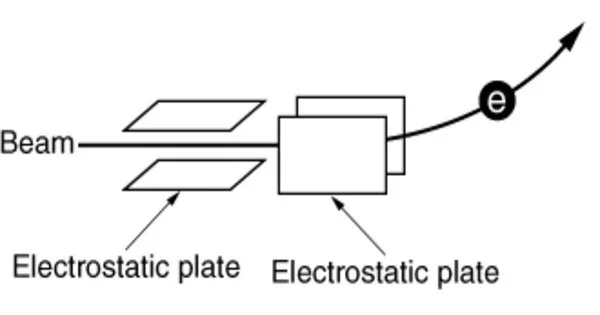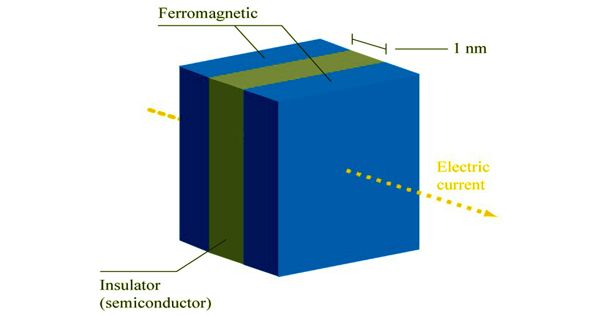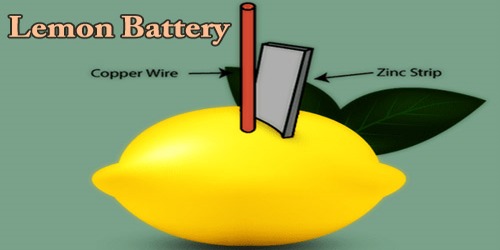Electrostatic deflection refers to a way for modifying the path of a beam of charged particles by the use of an electric field applied transverse to the path of the particles. The technique is called electrostatic because the strength and direction of the applied field changes slowly relative to the time it takes for the particles to transit the field, and thus can be considered not to change (be static) for any single particle. It is commonly employed in various scientific and technological applications, particularly in electron microscopy and cathode ray tubes (CRTs).
In electron microscopy, electrostatic deflection is utilized to control the path of the electron beam within the microscope column. By applying different electric potentials to sets of deflection plates or coils, the trajectory of the electron beam can be adjusted, allowing for scanning across a specimen or forming an image on a display.
Similarly, in CRTs, electrostatic deflection is crucial for steering the electron beam and forming images on the screen. Deflection plates, typically consisting of charged metal plates, are positioned near the electron gun and create an electric field that alters the path of the electrons, causing them to scan across the phosphor-coated screen and produce the desired visual output.
Explanation
The Lorentz force acts on any charged particle in an electrostatic deflection. By limiting the field to an electric field, electrostatic deflection uses a special, simplified case of this general effect. An electric field exerts a force on a particle that is proportional to the strength of the field and the charge on the particle. The direction of the applied force is the same as the direction of the electric field.
The applied electric field is oriented in the plane perpendicular to the initial direction of the stream for electrostatic deflection. This force accelerates the particles in proportion to their charge. The path the particles follow depends on their sideways acceleration and their velocity when they enter the deflecting field. Therefore, it is important for good control of the direction that the particles in the stream have a uniform charge-to-mass ratio and that they move at a uniform speed.
The basic principle behind electrostatic deflection involves the interaction between the electric field and the charged particles. When a charged particle passes through an electric field, it experiences a force that depends on the strength and direction of the field as well as the charge of the particle. By adjusting the electric field appropriately, the trajectory of the charged particles can be altered, allowing for controlled deflection.
It’s worth noting that while electrostatic deflection has been widely used historically, newer technologies such as electromagnetic deflection have become more prevalent in recent years. Electromagnetic deflection employs magnetic fields generated by coils to manipulate charged particles, providing more precise control and flexibility in various applications.
















